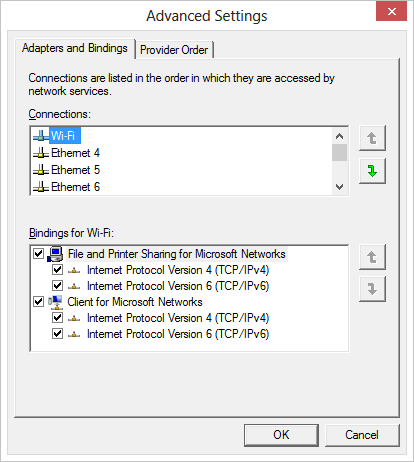I'm dealing with a networking problem that's driving me the right amount of nuts to persuade me to make this post.
I moved at the start of the month, and my ISP is unable to install net here until the 14th (yes, that's ridiculous). So, I've been borrowing a neighbor's wireless connection, and so far that's served me well. Because I need to access my NAS box on occasion, I have a router hooked up which that, and my PC plugs into. Normally, there's no issue here.
For some reason, though, I cannot have both my NIC that's wired into this router and my wireless dongle active at the same time. If both are active, I can access the NAS, but not the Internet. If I have just one active, I can't access whatever the opposite connection is connected to (obviously). Essentially, I can't go online and use my NAS at the same time, and that's annoying.
I tried a number of Windows tweaks that did nothing to help. At first, I was happy to blame Windows for the issue, but I experience the exact same thing under Linux. I was running a remote backup script earlier, and whenever the NIC was enabled, the script would just halt. Once I disabled it again, it'd continue in its merry way. I'm at a loss here.
I also changed routers, and the issue persists across both. I also changed NICs... ditto.
Funny enough, if I am loading a webpage and it's going slow, and then I disable my wired NIC, the page gives me a "This webpage is not available" error immediately. It's clear that the OS is trying to get my Internet through my wired connection instead of the wireless.
Any ideas?
I moved at the start of the month, and my ISP is unable to install net here until the 14th (yes, that's ridiculous). So, I've been borrowing a neighbor's wireless connection, and so far that's served me well. Because I need to access my NAS box on occasion, I have a router hooked up which that, and my PC plugs into. Normally, there's no issue here.
For some reason, though, I cannot have both my NIC that's wired into this router and my wireless dongle active at the same time. If both are active, I can access the NAS, but not the Internet. If I have just one active, I can't access whatever the opposite connection is connected to (obviously). Essentially, I can't go online and use my NAS at the same time, and that's annoying.
I tried a number of Windows tweaks that did nothing to help. At first, I was happy to blame Windows for the issue, but I experience the exact same thing under Linux. I was running a remote backup script earlier, and whenever the NIC was enabled, the script would just halt. Once I disabled it again, it'd continue in its merry way. I'm at a loss here.
I also changed routers, and the issue persists across both. I also changed NICs... ditto.
Funny enough, if I am loading a webpage and it's going slow, and then I disable my wired NIC, the page gives me a "This webpage is not available" error immediately. It's clear that the OS is trying to get my Internet through my wired connection instead of the wireless.
Any ideas?

